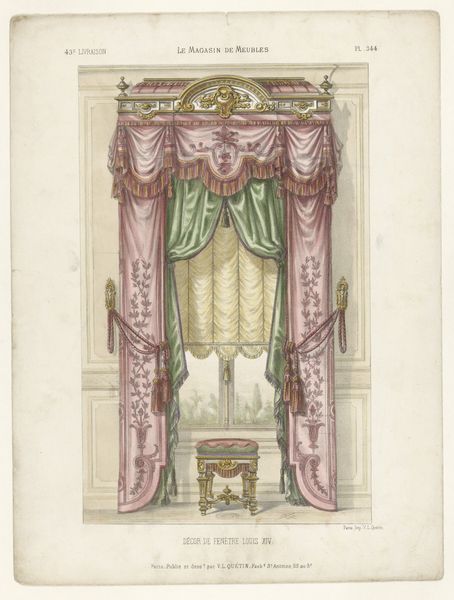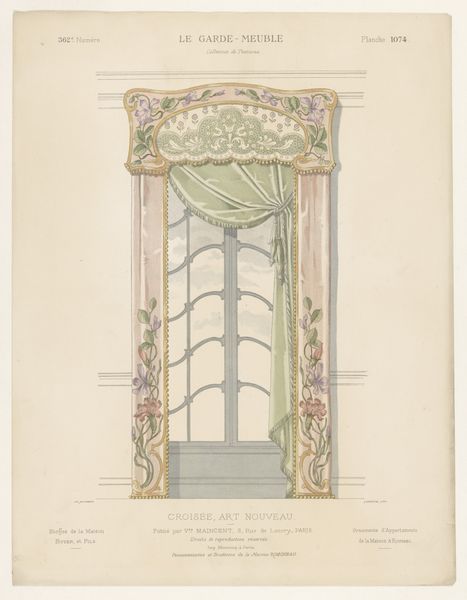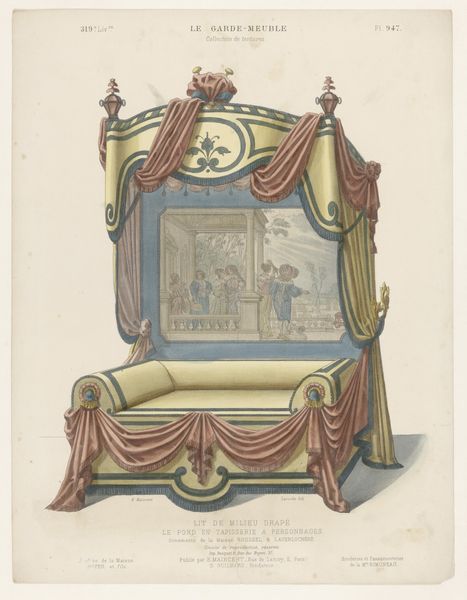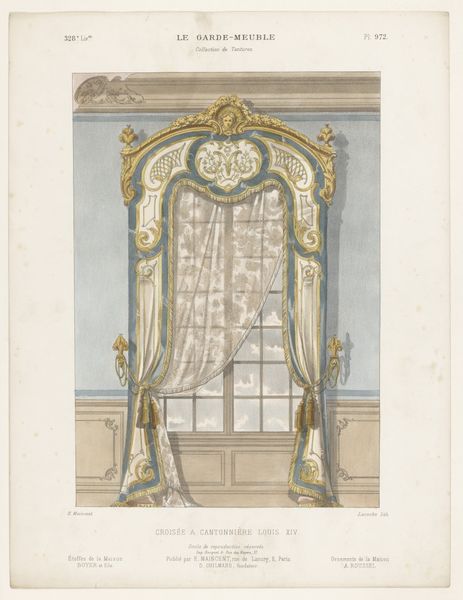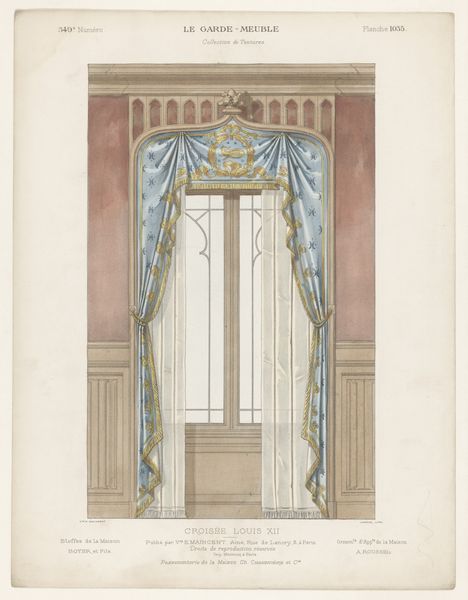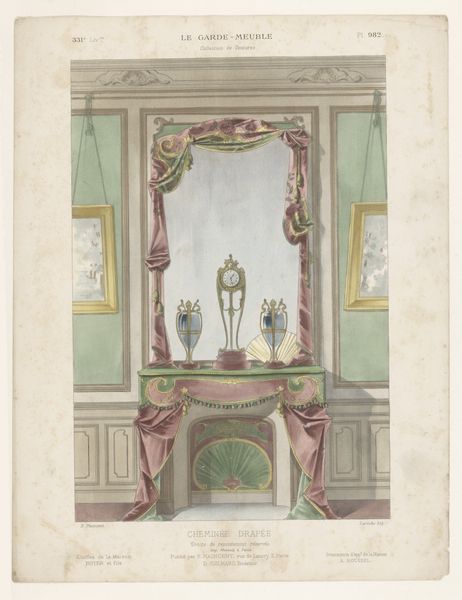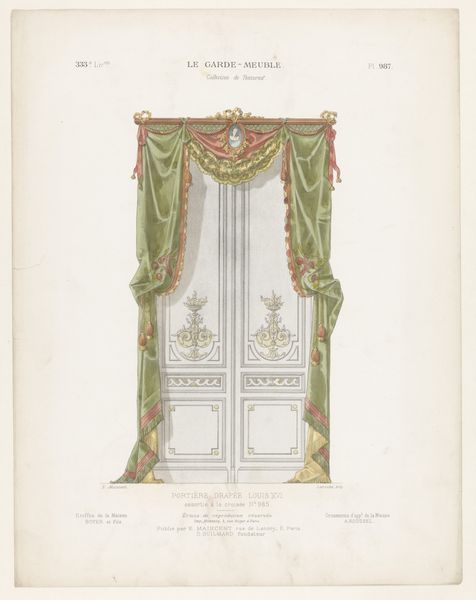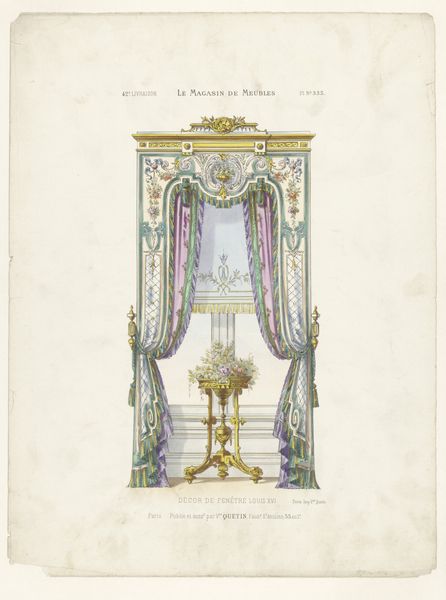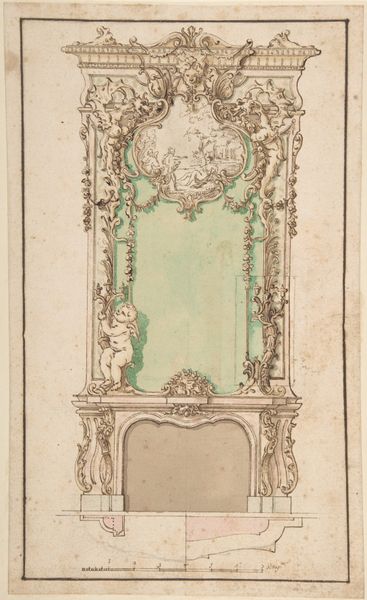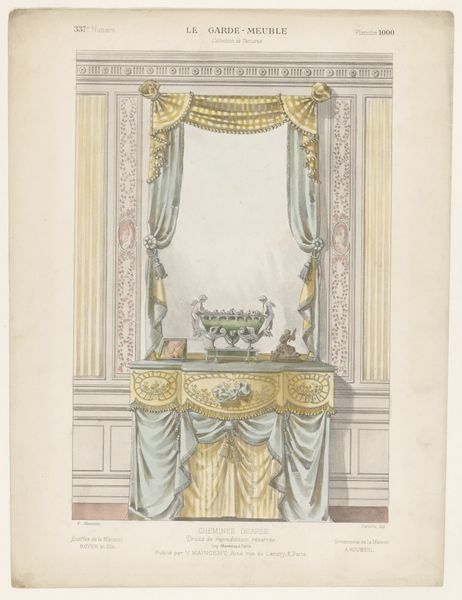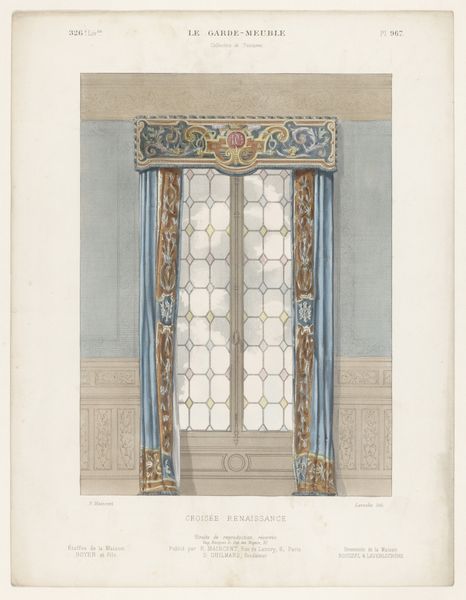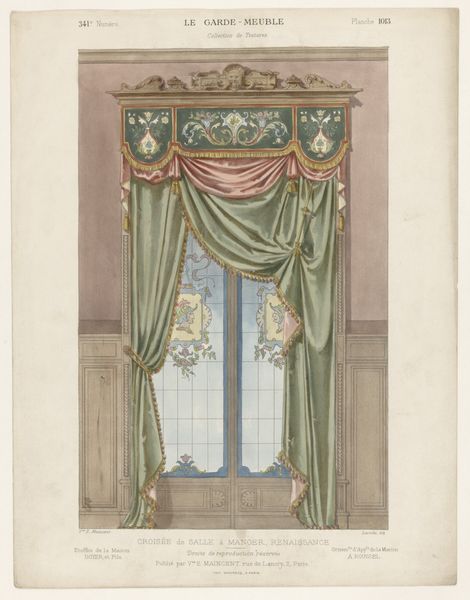
drawing, print
#
portrait
#
drawing
#
face
#
neoclassicism
# print
#
classical-realism
#
traditional architecture
#
men
#
history-painting
#
watercolor
#
profile
#
rococo
Dimensions: 14 1/4 x 10 1/2in. (36.2 x 26.7cm)
Copyright: Public Domain
Curator: Let's delve into Leonardo Marini's "Design for a Palace Interior," created sometime between 1730 and 1797. It's currently housed here at The Met. Editor: My first impression is one of serene opulence. The delicate watercolor rendering creates a sense of lightness despite the formal symmetry and architectural details. The pale greens and golds speak of leisure and privilege. Curator: Absolutely. We should consider how printmaking, drawing, and watercolor—all these reproduction methods made designs like this accessible. How might architects and patrons engaged with these images, adapted them, and ultimately transformed spaces? Editor: Right. Looking at this, I can't help but think about the construction of identity, too. The decorative scheme almost overwhelms the human presence, suggesting that one’s social status was profoundly performative and enmeshed with one’s surroundings. I am especially drawn to the tiny faces present in the round decorative sections along the walls, almost like looking down at its dwellers and occupants. Curator: Exactly! We also see a real investment in materials and craftsmanship. The execution emphasizes meticulous detail, showcasing an attention to luxurious ornament. But what about the unexecuted spaces, the large, untouched surface inside the wall panelings? Are these an acceptance of its print qualities or spaces for artistic growth? Editor: Those untouched spaces present the emptiness of aesthetic performance, even as gendered and racialized power dynamics played out within these private rooms. Who gets to perform and whose performances get to matter? It’s crucial that we are thinking beyond a purely formal analysis, right? Curator: I agree. These designs weren’t just abstract forms, but lived spaces with socio-political implications. Editor: Exactly, and even this drawing is an example of power and access made tangible. Curator: So true. Editor: Reflecting, this has made me think how drawings like this act as material manifestations of social structures that impact and shape lived experience and our access to certain forms of self-expression and access.
Comments
No comments
Be the first to comment and join the conversation on the ultimate creative platform.

